The Vatican has announced the late Mother Teresa will be made a saint next year. Pope Francis has recognized a second miracle attributed to the beloved nun, clearing the way for sainthood. Cale Clarke is the director of “The Faith Explained” Seminar Series and he joined CTV to discuss this story.
Posted by CTV News Channel on Friday, December 18, 2015
Archive for year: 2015
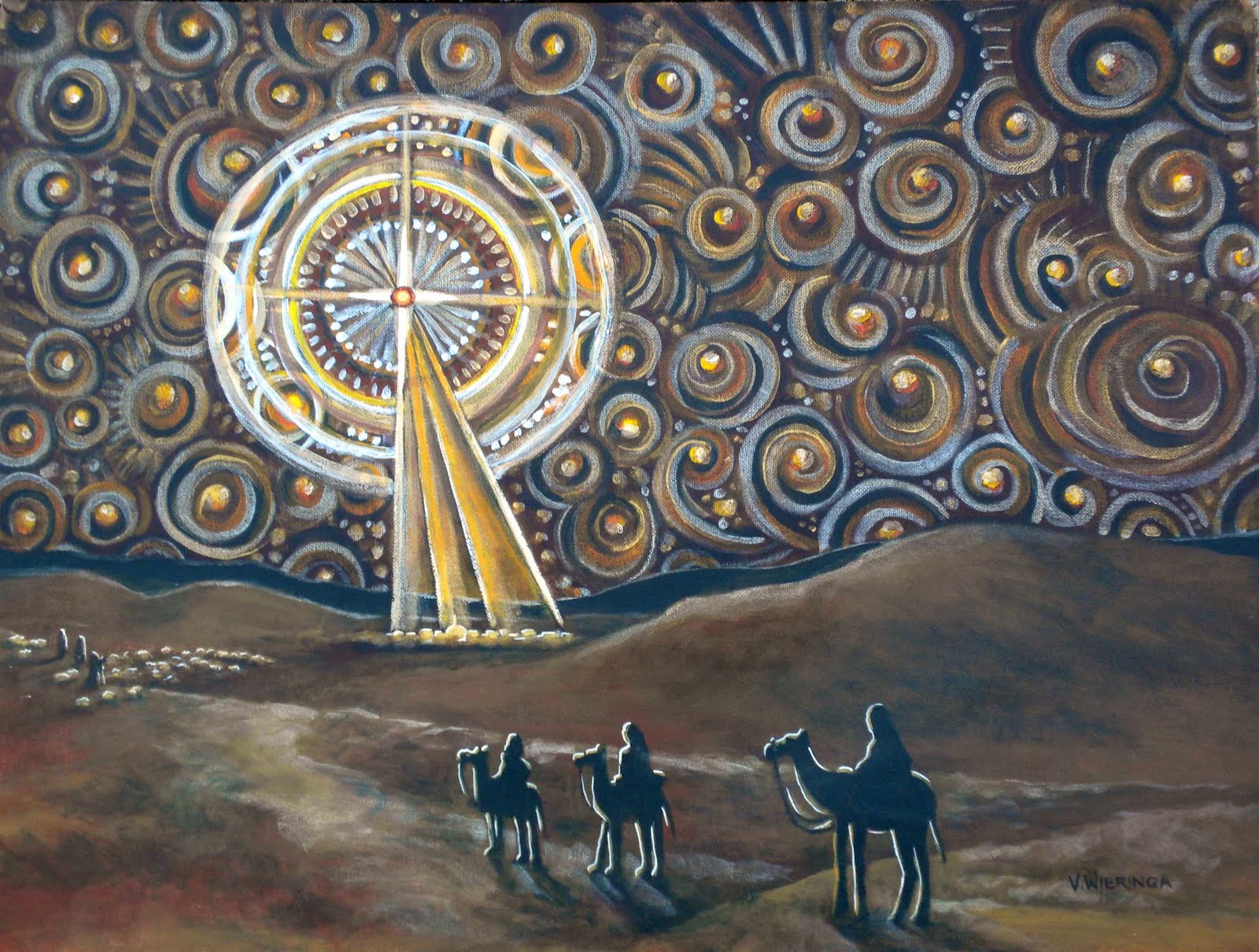
We are now in Advent, preparing to celebrate the birth of Jesus at Christmas. Many modern secularists find it very difficult to believe in the possibility of miracles, such as the virginal conception of Jesus. They say that the ancients were quite gullible to believe this, and that modern humanity is far too “educated and enlightened” to fall for such “nonsense”. How can we respond to this?
At one level, this is nothing more than chronological snobbery. In a recent article, RZIM apologist Jill Carattini responds to this fallacious line of reasoning:
In his 1945 essay “Religion and Science,” C.S. Lewis exposed one of the most common false assumptions at the heart of the science/faith divide, particularly as it pertains to the nativity of Jesus. The assumption is that this “primitive” nativity was likewise filled with primitive thinkers devoid of any sort of knowledge of biology or natural reasoning. Here and elsewhere, Lewis saw that we hold our scientific advancements as something like demerits for prior generations, perpetuating the mentality that the only accurate thought is current thought, the only mind worth trusting is an enlightened one—of which I am conveniently a member.
The disciples…knew enough about the laws of physics to be completely terrified by the man walking on the water toward their boat. The crowd of mourners knew enough about death to laugh at Jesus when he insisted that the dead girl was only sleeping, and to walk away astonished when she came back to life. There were also the magi, astrologers who followed their scientific calculations to the child, Philip and Andrew who knew that the mathematics of two fish and a starving crowd were not going to divide well, Mary and Martha who knew that their brother’s death was the last word, and Thomas who knew the same after he watched Jesus crucified.
In each of these objections, I thankfully hear my own. So much so, that it would appear faith is not a turning of one’s back on the fixed laws of nature or physics or mathematics, but rather, a recognition in the very face of these laws we know and trust that something from outside the law must have reached into the picture. I find each of these scenes both remarkable and reasonable precisely because of the reactions of men and women with a grasp of natural law and the same objections that any of us would have offered had we been present. It would be blind faith indeed if we were receiving a story that wanted us at the onset to fully reject the laws of natural reasoning in replacement of something else. What we receive instead is a story filled with undeniable indications which suggest that something—or Someone—has startlingly stepped into the picture.
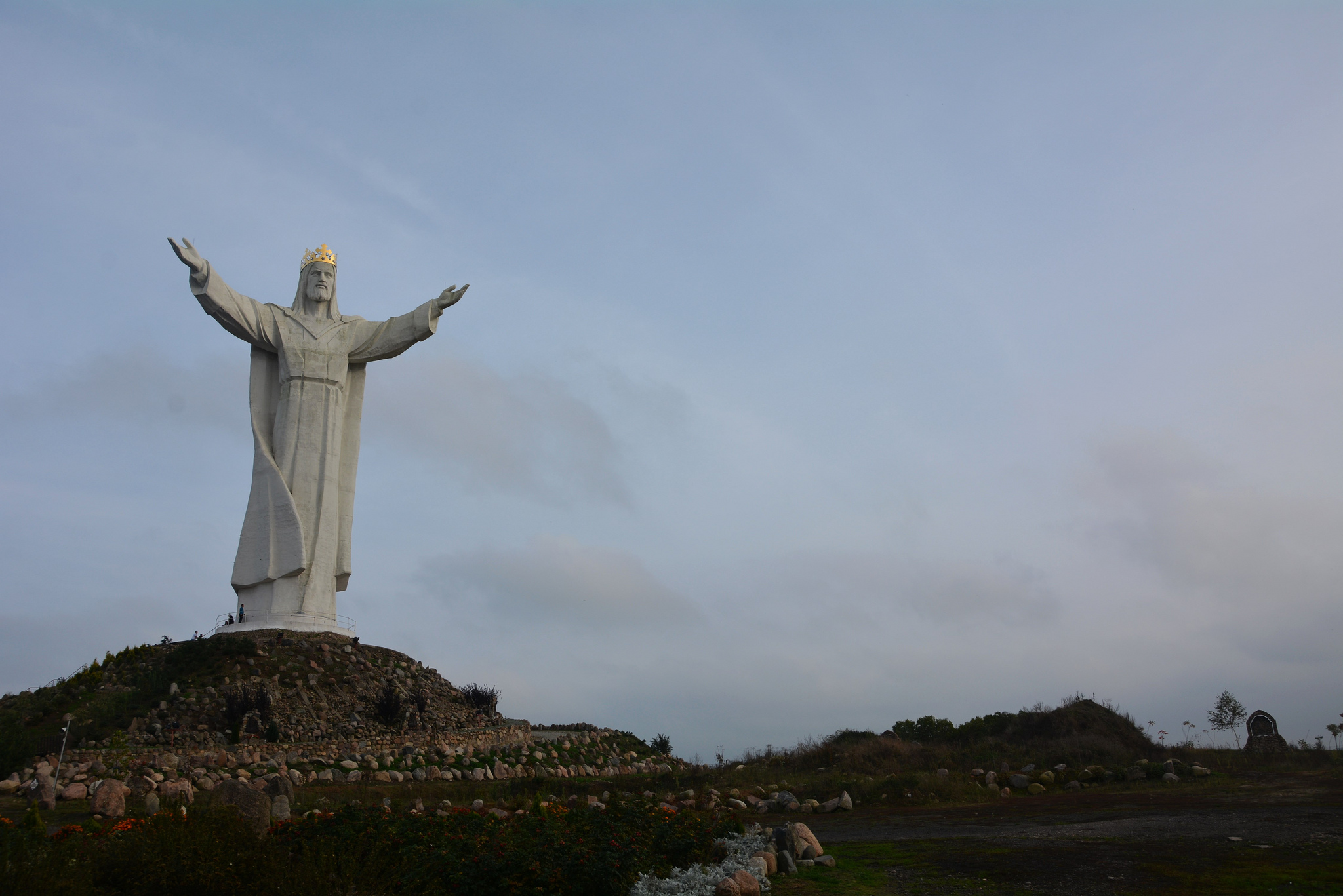
Q. This Sunday is the Feast of Christ the King. Can you explain how this relates to the second reading, which is taken from the Book of Revelation?
A. In the Old Testament, the Kings of Israel (think of David and Solomon) and the priests of Israel (think of someone like Caiaphas, the High Priest who condemned Jesus to death, along with Pilate), were different individuals with different roles. In fact, the Essenes (the Jewish sect that lived, among other places, at Qumran and wrote the Dead Sea Scrolls) expected two different Messiahs to come: a Priestly Messiah, and a Kingly Messiah. They actually expected the Kingly Messiah to wage war against Rome, and that he would personally slay “The King of the Kittim” (the Roman Emperor himself) in the final battle.
Jesus radically combines (and redefines) the roles of King and Priest in his own person. In fact, Jesus is both Priest and Victim, the sacrifice and the one who offers it: “Jesus Christ is the faithful witness” (Revelation 1:5). The word “witness” in the original Greek text means “martyr” – one who offers one’s life for God. Unlike the Kingly Messiah envisioned in the Dead Sea Scrolls, Jesus does not attempt to kill the Roman official, Pilate, but instead allows himself to be killed as a sacrifice for sin. This is why Jesus says to Pilate (as we read in today’s Gospel): “My kingdom does not belong to this world. If my kingdom did belong to this world, my attendants would be fighting
to keep me from being handed over to the Jews” (John 18:36).
Jesus is indeed King – not just over Israel, but over all nations: “the ruler of the kings of the earth” (Revelation 1:5). Jesus received this kingship from God the Father, which is why Revelation says that “he is coming amid the clouds” (Revelation 1:7). This is actually a reference to today’s first reading from the Old Testament Book of Daniel (Daniel 7:13-14), which speaks of “one like a son of man” (remember, “Son of Man” was Jesus’ favourite self-designation on the Gospels), “coming with the clouds of heaven” to receive “dominion, glory, and kingship” from “the Ancient of Days” (God the Father). The Daniel text says that “all peoples, nations, and languages serve him”. This will indeed be fulfilled at Jesus’ Second Advent.
Q. How can we apply these truths to our lives today?
A. Today’s second reading reminds us that Jesus “has made us into a kingdom, priests for his God and Father” (Revelation 1:6). By virtue of our baptism, we all share in Christ’s “offices” of King and Priest. And we must exercise these offices the way Jesus did: we don’t “Lord it over people”, but rather lay down our lives for others by serving them as Jesus did. Everything we do – in our spiritual life, our work, our relationships, and in sharing our faith – must be united by this concept of serving God and others. This is our priestly sacrifice for God. And in Jesus’ Kingdom, “to serve is to reign.”

As we continue through this month of November, we’re getting closer and closer to the end of the liturgical year. This month has also seen us celebrate the feasts of All Saints and All Souls. So, it is a natural thing to think about our final end as we approach the end of another Church year. It’s also, of course, profitable to “begin with the end in mind”, to consider how our supernatural destiny following death affects our purpose in daily life.
Here are four thought-provoking verses from the New Testament that shed light on this:
1) “You, therefore, must be perfect, as your heavenly Father is perfect” (Matthew 5:48).
In these words from the Sermon on the Mount, Jesus is preaching to the vast crowds. He is not speaking only to his “priests” (the Apostles). In other words, the Lord expects all baptized believers to be saints – not just priests, nuns, and monks. This is the “universal call to holiness”, which Vatican II reminded us of. It is both as old and as new as the Gospel.
2) “This is the will of God, your sanctification” (1 Thessalonians 4:3).
Many people wander through life wondering what God’s will for them might be. Saint Paul spells it out to the Thessalonians: God’s will is that you become a saint. His will is that you be holy, that you be sanctified. And what does it mean to become a saint? Nothing more than becoming the best version of yourself, the masterpiece God had in mind when he created you. In the verses that follow, St Paul also spells out some obvious facets of the life of sanctity, including avoiding immorality.
3) “He (God the Father) chose us in him (Christ) before the foundation of the world, that we should be holy and blameless before him” (Ephesians 1:4).
Saint Paul writes here to the Ephesian Church, reminding them of God’s plan for them from all eternity: that they would be saints. Paul was writing to a group that included many ordinary, everyday Christians: blacksmiths, metalworkers, and others involved in the trades. God expected the same sanctity from them as he did from Paul. The same is also true, of course, for you and I.
4) “Without holiness, no one will see the Lord” (Hebrews 12:14).
All of us want to go to heaven after we die. All of us want to see Jesus face-to-face. The writer of Hebrews gives us some straight talk: only saints get into heaven. So, if you want to go there, get serious about your spiritual life. Satan likes to trick us with the lie that there are three different kinds of people: those who are obviously saints, those who are obviously evil, and regular people like you and me. But we read in the parables of Jesus in the Gospels about many “normal, good people” who didn’t make it to heaven, because they failed to take God seriously: the “foolish virgins”, for example (Matthew 25:1-13), or those who refused the invitation to the wedding feast because they were too “busy” (Luke 14:15-24). If your goal is to get into heaven “by the skin of your teeth”, what happens if you miss your target? Rather, we should make up our minds to become saints. We can, with God’s help.
Are there other biblical verses that you have found helpful in responding to the call to holiness? Share this post and your answer on Twitter, Facebook, or LinkedIn.
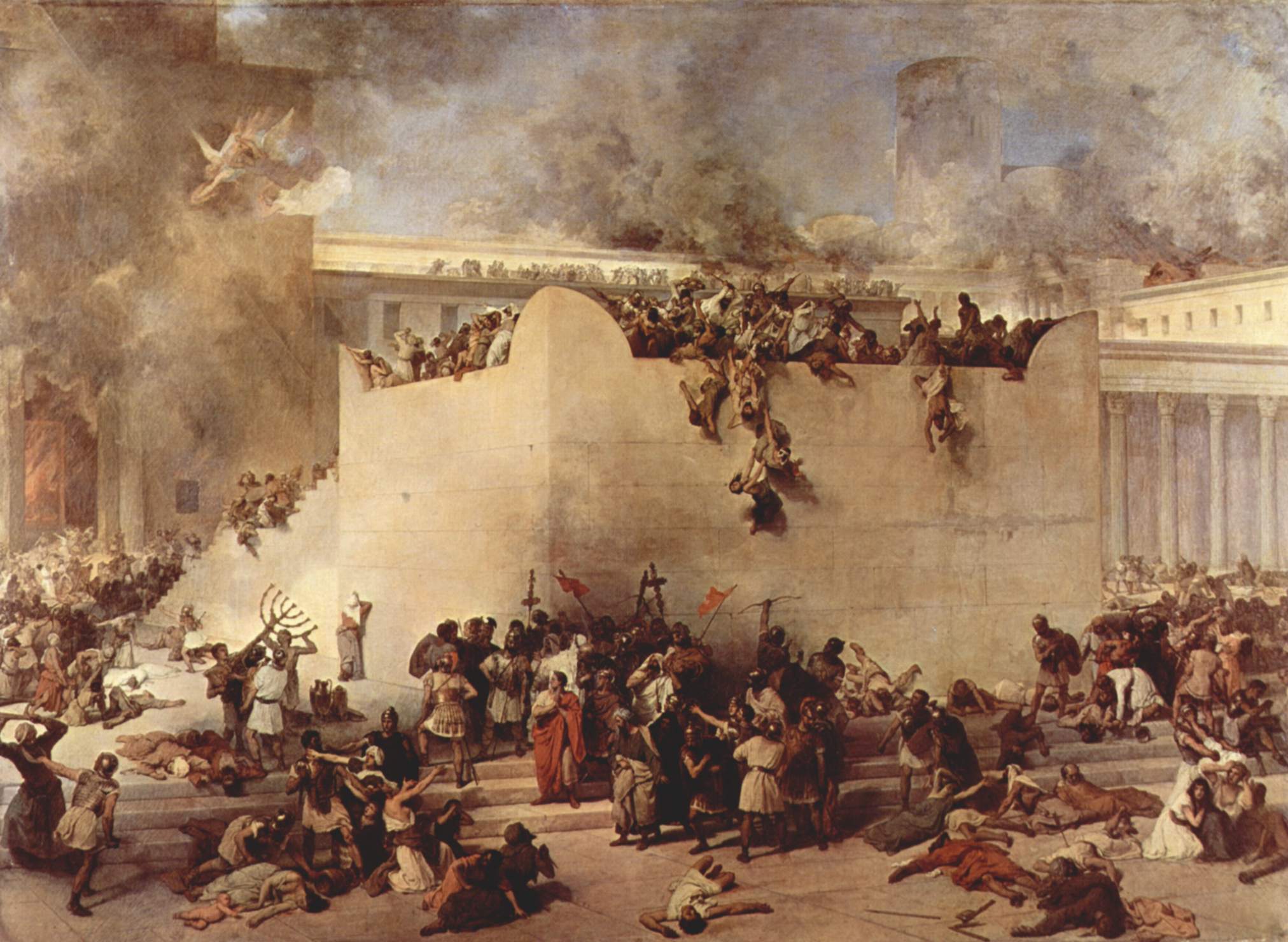
Q: In this Sunday’s Gospel, Jesus appears to be talking about the end of the world. Is he?
A: There is a real connection with what Jesus is saying here in Mark 13, and with the Book of Revelation, which we are studying on Thursdays here at St Justin’s – you’re welcome to join us! Jesus’ “eschatological discourse” on the end of the universe indeed has reference to the end of history, and the renewal of the space-time universe in which we live. But its most immediate meaning refers to the destruction of Jerusalem and its temple in the year 70 AD.
Remember, Jesus says “Amen, I say to you, this generation will not pass away
until all these things have taken place.” How long is a generation? 40 years. Let’s do some quick math: Jesus’ death and Resurrection took place in approximately 30 AD. Jerusalem and its temple were destroyed exactly 40 years later, in 70 AD. So, Jesus’ solemn prophecy came true. Should anyone be surprised?
Q: What does the destruction of Jerusalem’s temple have to do with the end of the universe?
A: To the Jews, the temple was a miniature model of the universe, and the universe was to them, as it were, a gigantic temple. The temple curtain separating the Holy Place from the Most Holy Place had images of the stars, the moon, and the planets. Thus, when it fell, it was like Jesus predicted: “the moon will not give its light, and the stars will be falling from the sky”.
God’s judgment fell on the wicked temple establishment in 70 AD because of its rejection of the Messiah, as well as because of its avaricious, self-serving leadership. This was indeed the point of last Sunday’s Gospel reading from Mark 12 (the widow’s offering). Almost every preacher uses that text as an example of trust in God and sacrificial giving on the poor widow’s part – and that is undoubtedly a good application of the text.
But, read in context, it is a living parable of what Jesus had just explained about the religious leaders of his day. Jesus had said: “Beware of the scribes, who like to go about in long robes, and to have salutations in the market places and the best seats in the synagogues and the places of honor at feasts, who devour widows’ houses and for a pretense make long prayers. They will receive the greater condemnation.” And he sat down opposite the treasury, and watched the multitude putting money into the treasury. Many rich people put in large sums. And a poor widow came, and put in two copper coins, which make a penny. And he called his disciples to him, and said to them, “Truly, I say to you, this poor widow has put in more than all those who are contributing to the treasury. For they all contributed out of their abundance; but she out of her poverty has put in everything she had, her whole living.” (Mark 12:38-44).
The religious leaders of Jerusalem were supposed to be caring for widows and orphans. Instead, they were “devouring widows’ houses”. And here we have a widow whose house is indeed “devoured”. The two small copper coins she had put into the offering represented, in a sense, her last meal – they were just enough money to buy flour to make one small loaf or cake. In a sense, this woman’s plight was a living illustration of what Jesus had been complaining about.
The ill-treatment of those who were to be cared for and the rejection of Jesus as Messiah were characteristic of an evil temple leadership whose hearts had been closed to God and others. This is why Jesus wept over the city of Jerusalem: he foresaw its destruction because many would fail to repent. May our own hearts learn the lesson well.
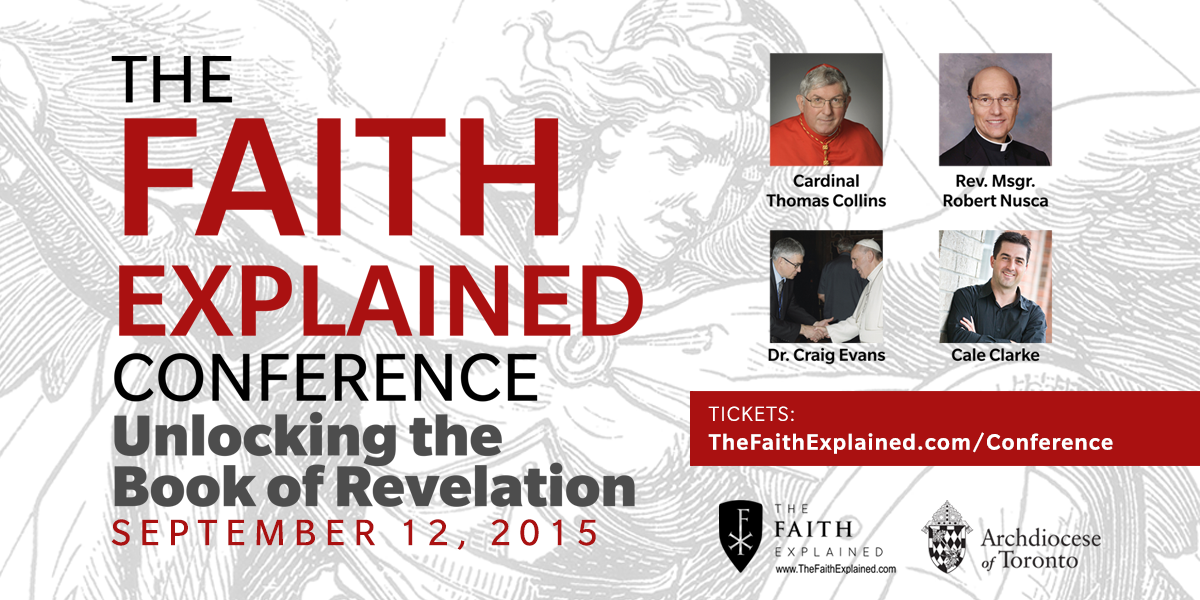
Due to the popularity of The Faith Explained Conference: Unlocking the Book of Revelation this Saturday, Sept 12, we have moved the conference to a larger venue. It will now be held at St Joseph’s Secondary School, 5555 Creditview Rd, Mississauga, Ontario, L5V 2B9 (nearest intersection: Creditview & Bristol).
Start and end times remain the same (10:00 pm – 4:30 pm). Lunches are available for purchase for $8 upon registration, or bring your own.
You can register here.
We look forward to seeing you and your friends on Saturday!
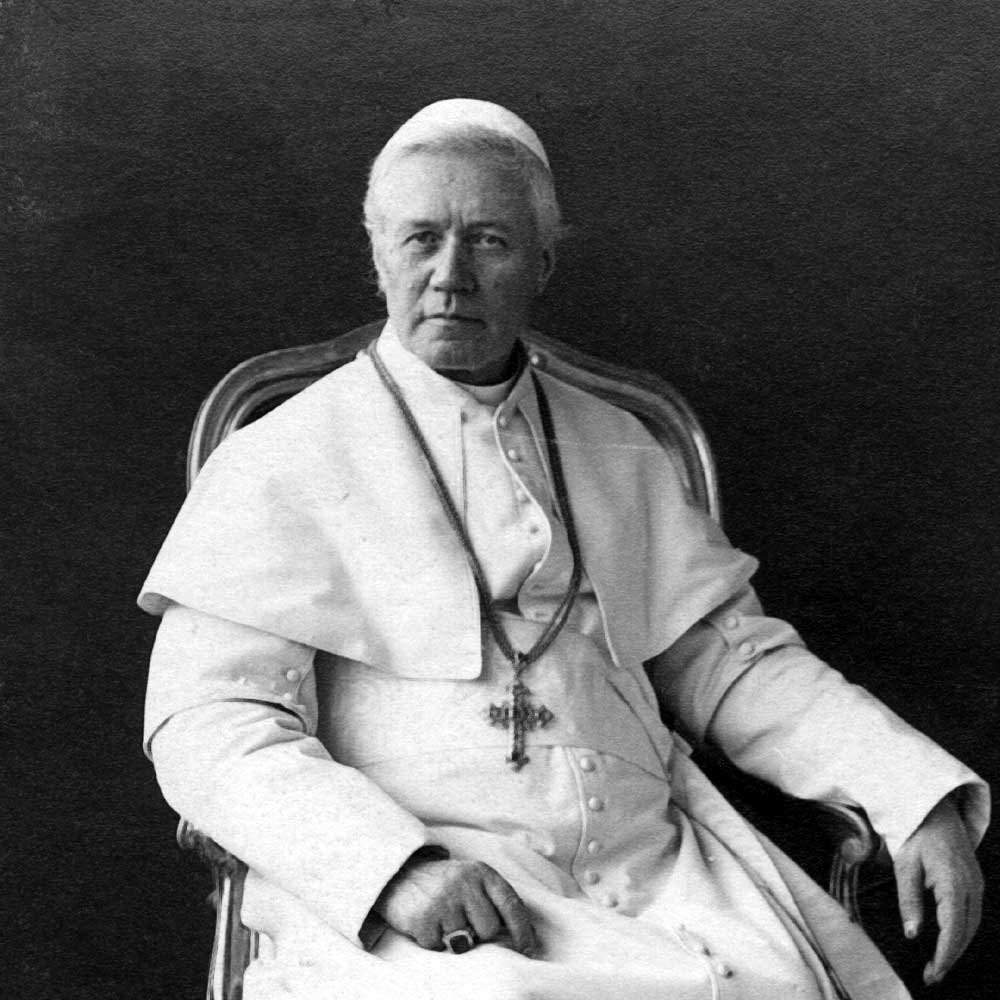 Today marks the feast day of Pope St Pius X, who occupied the See of Peter from 1903-1914. One of St Pius’ great reforms was to lower the age of first communicants to the age of reason (usually considered to be around eight years old). As long as a child believed that the Eucharist was the Body, Blood, Soul, and Divinity of Jesus Christ – hidden under the appearances of bread and wine, that child could receive communion. This is a great thing, because it reminds us that we can be sure a doctrine is true, without necessarily having complete and total understanding of it.
Today marks the feast day of Pope St Pius X, who occupied the See of Peter from 1903-1914. One of St Pius’ great reforms was to lower the age of first communicants to the age of reason (usually considered to be around eight years old). As long as a child believed that the Eucharist was the Body, Blood, Soul, and Divinity of Jesus Christ – hidden under the appearances of bread and wine, that child could receive communion. This is a great thing, because it reminds us that we can be sure a doctrine is true, without necessarily having complete and total understanding of it.
For example, no one, not even the greatest theologian, completely understands the doctrine of the Trinity. And anyone who says they do is mistaken, for no one has complete understanding of the uncreated, three-in-one Godhead crammed inside one’s feeble, created mind. Yet, every Catholic can be sure it is true that God is a Trinity of Persons, because it has been divinely revealed. In the same way, I believe and know that electricity works. I have certitude about it, even though I’m not a professional electrician and can’t explain the circuitry and currents involved. For me to benefit from it, I simply need to make an act of faith in what I know to be true – by turning on the light.
One of the reasons I left the Catholic Church as a twentysomething university student was that I could never get a satisfying answer from the Catholics I knew about why certain doctrines were true. I thought this was evidence of the weakness of the faith. In reality, I was, of course, making an elementary error in thinking that, simply because a religious adherent couldn’t explain a tenet of their faith, it therefore follows that it is not true.
Although we should, as the original Pope, St Peter, encourages us, “make every effort to add to (our) faith…knowledge” (2 Peter 1:5), one can still have certitude about these things, even if we don’t have perfect knowledge of them. Why? Because we have a divinely authorized Church to teach them to us – and we need this. If each of us had to reason our own way to saving knowledge of God by ourselves, we’d be in trouble, easily led astray. God foreknew this, providing us with a Church that would be Mater et Magistra (Mother and Teacher), safeguarding Jesus’ teachings until the end of time. We thank our Lord for this today, and for providing his Church with great spiritual fathers like St Pius X.
What do you think? Share this post on Facebook, Twitter, and LinkedIn.
You may also like: Pope Pius X and the Immaculate Conception
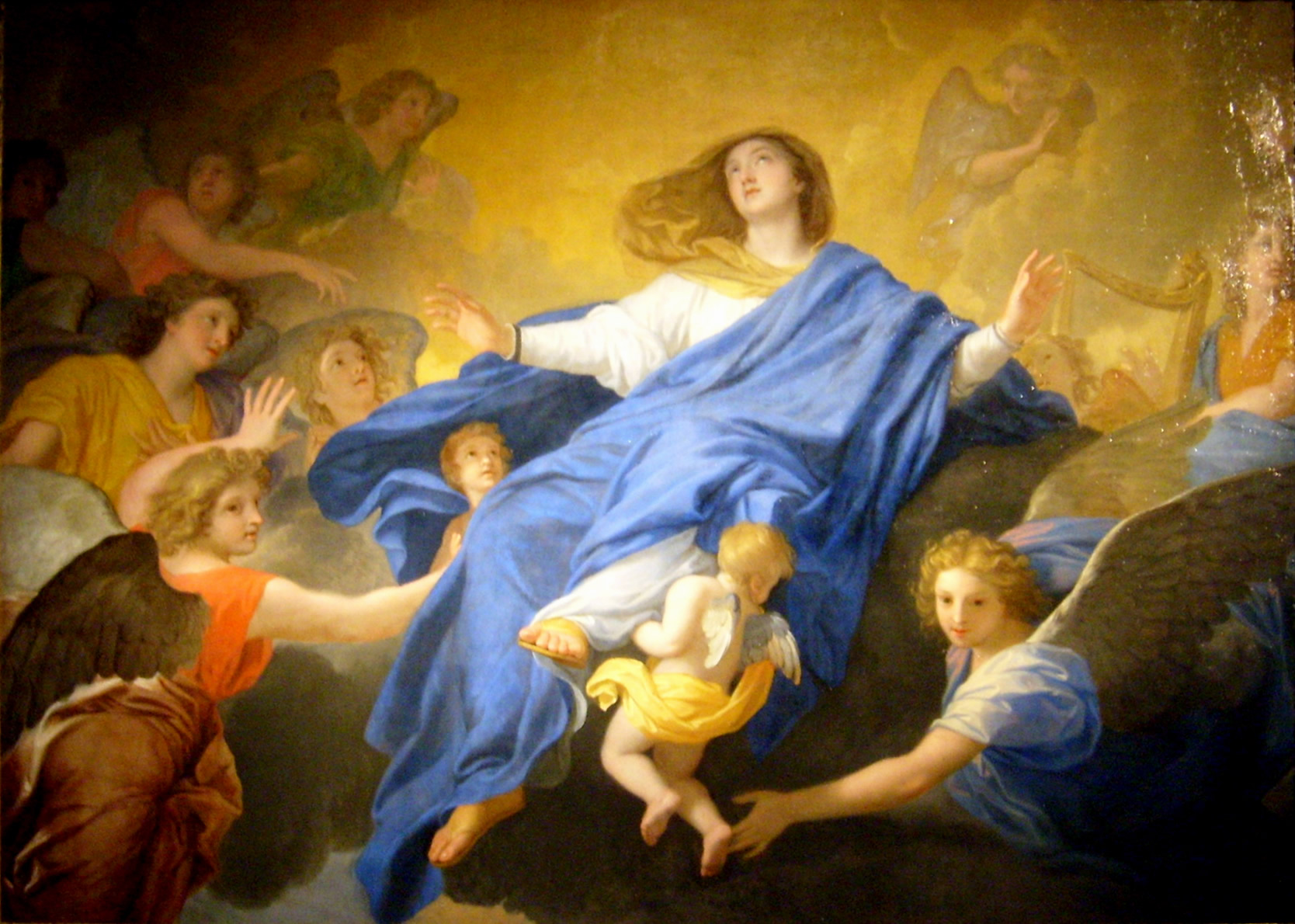 Today is the Solemnity of the Assumption of Mary, celebrating that God raised the Virgin Mary, body and soul, to the glories of heaven at the end of her earthly journey. Here are four quick facts about this teaching of the Church :
Today is the Solemnity of the Assumption of Mary, celebrating that God raised the Virgin Mary, body and soul, to the glories of heaven at the end of her earthly journey. Here are four quick facts about this teaching of the Church :
1. Catholics must believe this in order to hold the Faith.
The Assumption of Mary is one of the four Marian Dogmas (infallible teachings) that Catholics must believe (the others being the Immaculate Conception, Divine Maternity, and Perpetual Virginity of our Lady). The reason why validity of the doctrine can be trusted is that it rests on the same foundation as that of Transubstantiation or the Canon of the Bible – namely, the teaching authority of the Catholic Church.
2. There is good circumstantial, supporting evidence for the Assumption.
No Christian community has ever claimed to have the relics (bones or other mortal remains) of the Virgin Mary. When one considers how Christians venerated the relics and final resting places of important saints in the early Church period (such as St Peter’s Basilica being built over his tomb), it is remarkable that no church has ever claimed to have her relics. If the relics of the Mother of Jesus relics really did exist, they would have been prized above all others. An argument from silence isn’t always the greatest, but in this case, silence speaks volumes.
3. There is indirect, biblical support for the doctrine.
The simple fact of the matter is that, in salvation history recorded in the Bible, “assumptions happen”. Genesis speaks of Enoch, who “walked with God and was no more, because God took him” (Genesis 5:24; cf. Hebrews 11:5). Most interpreters believe that Enoch was assumed, body and soul, into heaven. Also, Elijah was taken up to heaven, body and soul, in a chariot of fire (2 Kings 2:11).
If these holy ones of old could be translated directly to heaven, why not the “Panagia” (“All-Holy”) mother of God, who “gave the Word flesh” (cf. John 1:14)? In Revelation 12, John sees the “Ark of the (New) Covenant”, Mary in heaven.
4. Christians have believed this for centuries.
Catholics did not “invent” the doctrine of the Assumption when Pope Pius XII officially defined it in 1950. All the Pope was doing was making clear that this teaching was always true and part of the deposit of faith (Jude 3) for centuries. How do we know this? Because the Church’s liturgy (including the content of liturgical prayers and feast days) included the Assumption from the earliest times. Some even believe it was the earliest of Marian feast days, originating in Jerusalem.
Many Christian practices were suppressed under the wicked reign of Emperor Hadrian, who had levelled much of Jerusalem in 135 AD, renaming the town after the pagan god Jupiter. After Constantine’s acceptance of the faith in the fourth century, many Christian feasts were revived. The Assumption began to be celebrated in Rome as early as the seventh century. It is in the liturgy that Sacred Tradition is taught most clearly, for “the Church believes as She prays” (Lex orandi, lex credendi).
We have a powerful intercessor in heaven in Mary, who precedes all of us who look forward to life in the new heaven and the new earth in a glorified humanity of body and soul. We close with a liturgical prayer asking for that intercession: Recordare, Virgo Mater Dei, dum steteris in conspectu Domini; ut loquaris pro nobis bona (“Remember, Virgin Mother of God, when you walk in the presence of the Lord, to speak well of us”).
 Tickets are now available for The Faith Explained Conference: Unlocking the Book of Revelation on Saturday, September 12. You can get them at www.TheFaithExplained.com/Conference while they last! The conference will take place on Saturday, September 12 at St Joseph’s Parish in Streetsville (Mississauga), Ontario.
Tickets are now available for The Faith Explained Conference: Unlocking the Book of Revelation on Saturday, September 12. You can get them at www.TheFaithExplained.com/Conference while they last! The conference will take place on Saturday, September 12 at St Joseph’s Parish in Streetsville (Mississauga), Ontario.
The Book of Revelation is the Bible’s most mysterious book. How can we make sense of it all – dragons, beasts, a killer lamb, and the end of the world? What’s the connection between the Apocalypse and the Mass? What message about Jesus Christ did this book hold for its original readers, and what does it mean for us today Together, we will discover the answers, as we learn how Revelation reveals Jesus Christ and his plan to us.
Speakers include the great Cardinal Thomas Collins and Monsignor Robert Nusca (Fellow at the St Paul Institute for Biblical Theology and former Rector of St Augustine’s Seminary). Both Cardinal Colllins and Monsignor Nusca are noted Revelation scholars who completed their PhD under the legendary Fr Ugo Vanni in Rome.
Speaking of legends, we’ll also have Dr Craig Evans joining us once again. Dr Scott Hahn calls Dr Evans “the best Bible scholar in the English-speaking world”, and with very good reason. Dr. Evans was recently invited to the Ratzinger Conference for Bible scholars in Rome, where he met Pope Francis. I will also be giving a talk, and we think your faith will be energized and encouraged by what you’ll learn with us. So don’t delay – click here to reserve your seats now! Priests, Seminarians, and religious enjoy complimentary admission.
Please let others know about our Revelation conference by emailing this post, or share via Facebook, Twitter, LinkedIn, and other social media! You can use the sharing tools below. See you on Sept. 12!
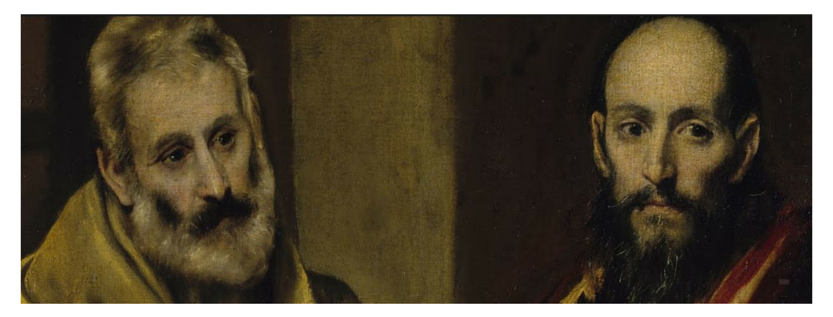 Today is the Solemnity of Saints Peter and Paul, Apostles who were so crucial to the beginnings of the Church, and whose writings (preserved in the New Testament documents) and example still echo through the ages to us today.
Today is the Solemnity of Saints Peter and Paul, Apostles who were so crucial to the beginnings of the Church, and whose writings (preserved in the New Testament documents) and example still echo through the ages to us today.
It has become fashionable for some scholars to suggest that Paul preached a different gospel, a “Gospel According to Paul”, if you will. Some have even suggested that Paul “invented” Christianity!
Reality and history, however, offer us the truth.
In Galatians 1, Paul gives us a timeline following his encounter with the risen Jesus on the road to Damascus (cf. Acts 9, 22, 26; c. 33 or 34 AD):
I want you to know, brothers and sisters, that the gospel I preached is not of human origin. I did not receive it from any man, nor was I taught it; rather, I received it by revelation from Jesus Christ.
For you have heard of my previous way of life in Judaism, how intensely I persecuted the church of God and tried to destroy it. I was advancing in Judaism beyond many of my own age among my people and was extremely zealous for the traditions of my fathers. But when God, who set me apart from my mother’s womb and called me by his grace, was pleased to reveal his Son in me so that I might preach him among the Gentiles, my immediate response was not to consult any human being. I did not go up to Jerusalem to see those who were apostles before I was, but I went into Arabia. Later I returned to Damascus.
Then after three years, I went up to Jerusalem to get acquainted with Cephas and stayed with him fifteen days. I saw none of the other apostles—only James, the Lord’s brother. I assure you before God that what I am writing you is no lie.
– Galatians 1:11-20
As Galatians 1 notes, three years after his supernatural encounter with the ascended Lord, Paul visited Peter in Jerusalem (c. 36 or 37 AD). James, the relative of the Lord, who became the Bishop of Jerusalem following Peter’s departure from the city, was there too. Paul’s purpose was not, as Dr Gary Habermas says, to casually “shoot the breeze” with these Apostles, but rather to do a historical investigation of sorts. In fact, Paul uses the Greek word historesai to indicate this. What Paul was essentially doing was ensuring that the Gospel – and the Jesus – that he was preaching lined up with the message preached by the Apostles who knew Christ best, who had walked and ministered with him on earth. Paul, of course, did not meet Jesus until he had already ascended into heaven.
In fact, many scholars believe that the ancient Christian creed that Paul cites in 1 Corinthians 15:3-8 was in all likelihood learned from Peter and James during Paul’s visit to Jerusalem, narrated in Galatians 1. Imagine being a fly on the wall at those meetings, able to listen in on those conversations!
Paul made himself accountable to the established leader of the Church on earth, Peter (cf. Matthew 16:13-20). He didn’t go “rogue”, feeling free to operate as an evangelist without the express permission of the leaders of the Ecclesia. Paul was also concerned about accuracy in his preaching about Jesus – another reason to visit those who had known Jesus, and his mighty deeds, best while the Lord was ministering on Earth.
As Paul himself stated in Galatians 1:6-9, speaking to those who had begun to drift from the truth of Christ:
“I am astonished that you are so quickly deserting the one who called you to live in the grace of Christ and are turning to a different gospel — which is really no gospel at all. Evidently some people are throwing you into confusion and are trying to pervert the gospel of Christ. But even if we or an angel from heaven should preach a gospel other than the one we preached to you, let them be under God’s curse! As we have already said, so now I say again: If anybody is preaching to you a gospel other than what you accepted, let them be under God’s curse!”
No, Paul was not the “inventor” of Christianity, but was (like all Christians should aspire to be) a witness of the real Jesus who truly lived, died, and was resurrected in human history.

